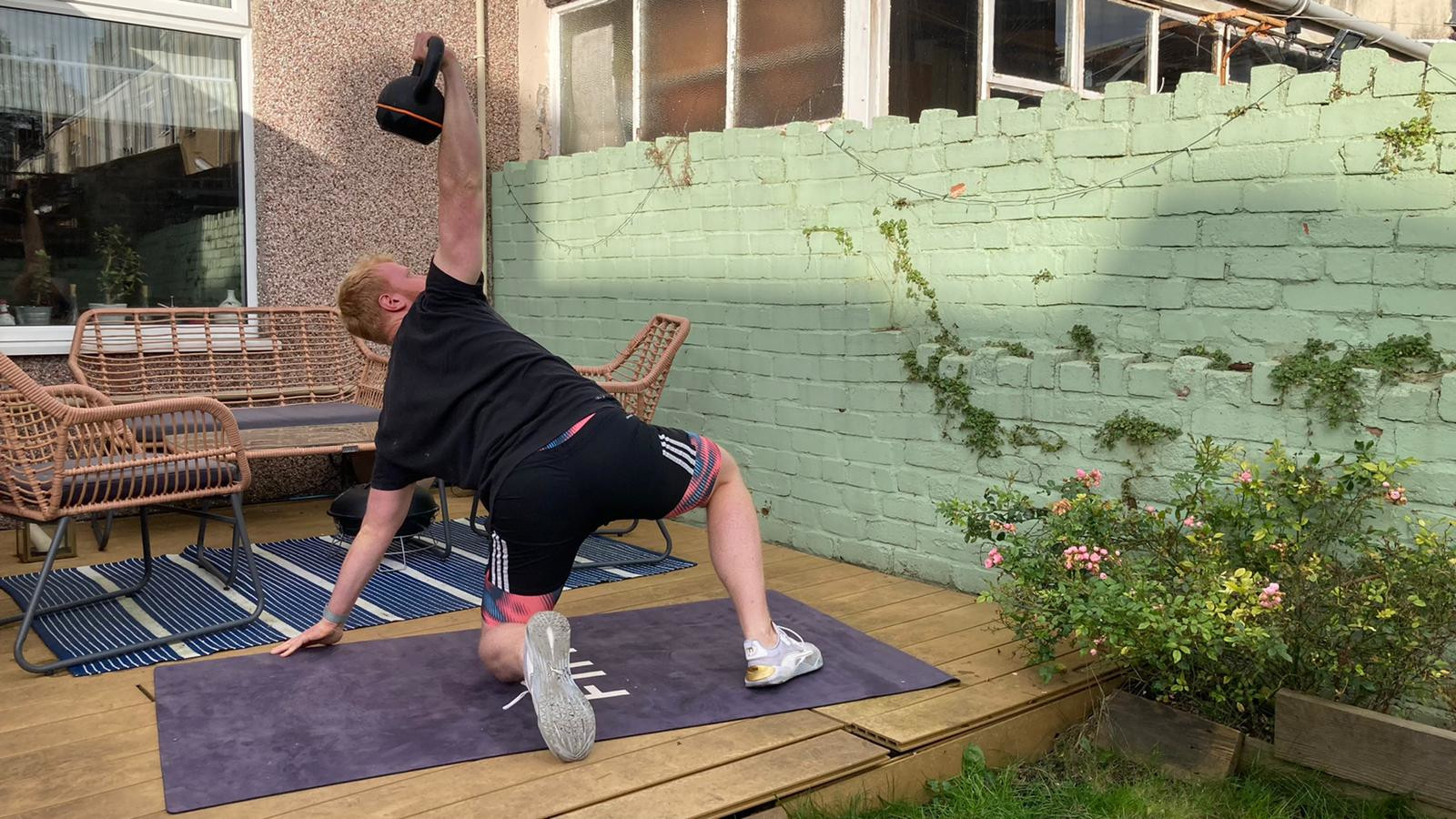This One Kettlebell Move Helped Me Achieve Two New PR Lifts
The Turkish get-up gave my body a tune-up and helped me post best-ever numbers for the back squat and split jerk

The Turkish get-up isn’t a glamorous move. It’s not done at speed and you’re never going to use a head-turning weight, but adding this kettlebell exercise to my training resulted in serious benefits in and out of the gym.
It lifted the hood on my body and gave my workout-worn shoulders, elbows and knees a tune-up. These are areas I need in good working order for the Olympic weightlifting and gymnastic elements of my regular CrossFit training.
Over the past couple of months my coach has included it in my training at least once a week as an accessory movement. Most of the time I’ve completed three sets of six reps on each arm with a light weight, while on occasion I’ve been challenged to go heavier, using a descending 3-2-1 rep scheme across three sets.
Learning how to do this move isn’t a straightforward affair. The video above from regulated healthcare charity Nuffield Health is a good place to start and Coach also has a step-by-step guide to how to do the Turkish get-up.
I also found the form pointers in this video from Squat University’s Dr Aaron Horschig useful.
How The Turkish Get-Up Benefited My Training
It Strengthened My Shoulders
Shoulder stability—the ability of the surrounding muscles to hold the joint steady—is something I’ve been trying to improve for some time. That’s because it’s vital for everything from technical barbell exercises including the snatch and overhead squat to bodybuilding stalwarts such as the overhead press and bench press.
Supporting a kettlebell overhead as you transition from lying on the floor to standing recruits the large and small muscles in and around the shoulder, such as the deltoids and rotator cuff, to keep the weight under control.
Sign up for workout ideas, training advice, reviews of the latest gear and more.
By adding Turkish get-ups into my training I was able to strengthen these muscles, helping my shoulders feel more stable and robust—one-rep max bench, here we come.
It Added A New Dimension To My Core Training
Too often, people get fixated on crunches vs sit-ups when trying to strengthen their abs, when we all would benefit from broadening our horizons with hanging abs exercises, isometric holds and loaded carries, to name a few.
Rather than the stomach-focused burn of umpteen sit-ups, I could feel the muscles all around my abdomen being used which resulted in a welcome boost to my core stability.
My Barbell Lifts Benefited
The Turkish get-up has helped my mobility and joint health, keeping me injury-free, and improved my core strength. Perhaps as a consequence I’ve also noticed an improvement in compound exercises like the barbell squat, clean and split jerk.
Since adding Turkish get-ups (and another unsung hero, heavy Bulgarian split squats) into my weekly plans, back squats have started to feel far easier and smoother, and my five-rep max has bounced up by 11lb.
I’ve also broken my stubborn 225lb split jerk PR by a few pounds—something I can’t help but feel my upgraded shoulder strength and stability has played a leading part in.

Harry covers news, reviews and features for Coach, Fit&Well and Live Science. With over a decade of training experience, he has tried everything from powerlifting to gymnastics, cardio to CrossFit, all in a bid to find fun ways of building a healthy, functional body.
